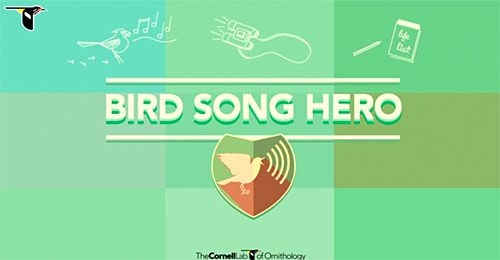
These are images showing sound patterns graphically by pitch and length. This guide utilizes spectrograms to learn bird calls and songs. I am currently checking out Peterson’s Field Guide To Bird Sounds Of Eastern North America. I have included my favorites below with links to Amazon. I have also listened to CDs when preparing for a birding vacation in a new geographic region with many new birds. Another good reason to purchase is being able to listen to those birds when out-of-season in your area. This allows for more repetitions for memorization. There are also CDs that can be purchased that have regional birds recorded. For example, the chickadee is called that for a reason, the Eastern bluebird with its “cheer cheerful charmer” and the classic White-throated sparrow’s “old Sam Peabody, Peabody, Peabody”. Some songs or calls can be “translated” phonetically into phrases and more easily remembered. If you hear a particular bird enough times, you will begin to remember the more obvious ones. I would take the time to watch the bird and listen to it. Most of the time, that bird would be singing and calling while I was observing it. When I began birding, I used a field guide to identify birds by their field marks. Duck wings produce a whistling sound when flying nearby and a ruffed grouse will use its wings to produce a rapidly-increasing drumming sound during breeding times. Birds will also produce calls with their wings. These calls can be very species specific and aid in bird identification. Non-vocal calls can include woodpeckers drumming on tree limbs. These examples are all of the vocal kind. Some species will call to gather back together if getting too separated. Young birds can also produce calls when separated from the adult or when it wants to be fed. Many birds will produce a characteristic call when they are in distress, such as being chased by a predator or something is near it’s nest. They can be for courtship or territorial purposes. Finally, they can be sounds that are non-vocal. Secondly, they can be made by any bird, such as herons or gulls, not just those that are songbirds. For one, they are not long enough to be considered songs. Callsīird calls are not bird songs for several reasons. In migration, white-throated sparrows will sing in late fall and early spring. I have been on many walks in the afternoon and been very disappointed in seeing or hearing only a few birds.Īs mentioned before, singing is predominantly for breeding, but some species will sing at non-breeding times. In places that are very warm during the mid-day, birds will be coming still and quiet during the mid-afternoon hours. Birds will sing throughout the day, but you will be more successful if you go out in the early morning or late afternoon. If you are venturing out with a focus on hearing bird songs, then some planning is necessary.

Some species will sing from the ground while others, like the bobolink or horned lark, will sing while in flight. Either the intruding male will compete for that territory or the intruder will same his time and energy and move on to another area without competing rivals.īirds usually sing their songs while perched from a prominent spot or may sing while moving through the canopy. Concurrently, the song will alert other males that a rival is present in the area and actively searching for a mate. At these times, the songs are sung by the males in an effort to attract a mate.
ALL ABOUT BIRDS SOUNDS FULL
When used for courtship, you will probably hear songs from spring until mid-summer, when the breeding season is in full swing. Songsīird songs are used primarily for two reasons, for courtship and for showing territories. Finally, you may just want to know if a bird is present in an area and will be satisfied if you can just hear audible evidence of its existence. In others, the call or song from the bird could be the final piece in the puzzle in being able to identify similar looking birds. In some cases, you will hear the sound and be interested in finding the bird making it. Calls can also be non-vocal sounds, which will be explained later.īoth songs and calls can be useful in identifying birds, depending on the situation. Songs are larger vocal patterns, mostly for territory and courtship purposes.

Calls are 1-2 note vocalizations made by all birds for various reasons, while songs are usually made by birds in the passerine family, the songbirds. The best place to start, I guess, would be distinguishing between songs and calls. What’s the difference between Songs and Calls? The key - learning to identify them by their songs or calls. Many times, I only hear certain species but never see them. Many people will assume that you see all the birds while you are out on a bird walk.


 0 kommentar(er)
0 kommentar(er)
